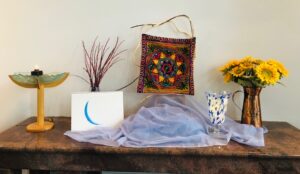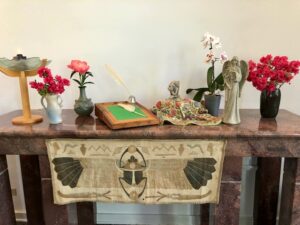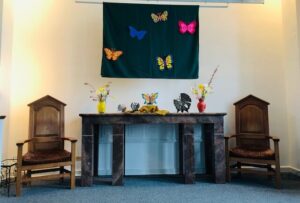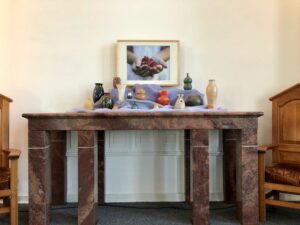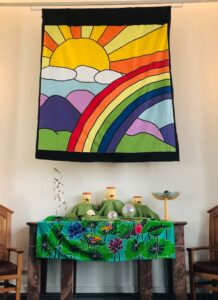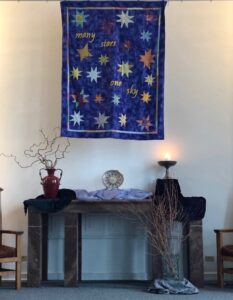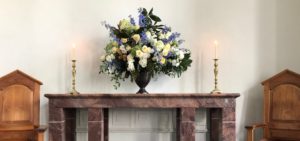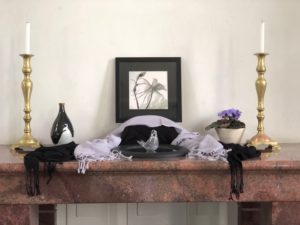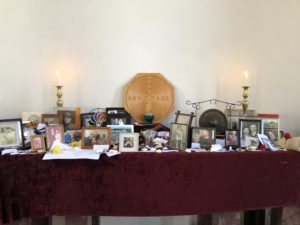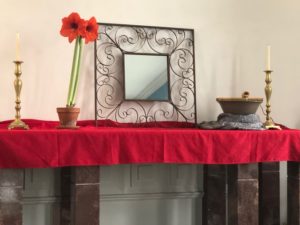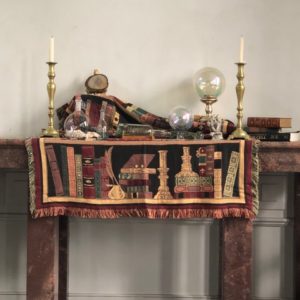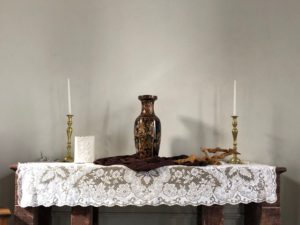On Sunday, September 10, 2017, the congregation I serve celebrated its annual Balloon Sunday. We heard the story we called “Grandmother’s Courage,” and my reflections were an exploration of its message. (Although the story is not included in this post, I think the lessons are clear even without knowing it.)
In seminary I was taught the skill and the art of exegesis. Exegesis is a word that describes the interpretation of a text – usually a passage of sacred scripture. It comes from an ancient Greek word that means, “to lead out.” To do exegesis, to exegete, is to “lead out” the deeper meanings of a text. Now … like I said … you normally exegete a passage of sacred scripture, but this morning I’m going to exegete the story Leia read a little while ago.
It all starts at midnight. In many myths and stories midnight is a time of mystery and magic; it’s the transitional point between the day that has been and the day that is coming. I think it’s important to recognize that Grandmother doesn’t realize that it’s midnight. She think it’s her normal time of waking, 3:00 (which, for me at least, is not a magical time at all).
Because Grandmother doesn’t realize that she’s at this magical moment – she doesn’t realize that there’s anything out of the ordinary – and apparently neither does her horse. Smart just plods along the way he always does, and Grandmother is so used to her routine that she’s even able to fall asleep!
But then, as in all good hero myths, something dangerous comes. Smart and the Grandmother can tell that it’s coming, can sense its approach – it doesn’t suddenly appear. This, of course, gives them both time to get pretty scared.
What does come suddenly, what does appears as if from nowhere, is that hare. It just pops up, jumps up onto Smart and then into Grandmother’s lap, and without even pausing for a moment to think about what to do, Grandmother acts. She acts to save the hare. It’s just the right thing to do. She may be scared, but she’s strong.
And then that scary rider comes up. She can’t make out what, exactly it is, but she knows that it’s dangerous, and she knows that it’s bad. Have you ever just had a feeling about something that it just wasn’t … right? That something was wrong, even though you couldn’t put your finger on just what it was? Well, that’s where the Grandmother found herself. But even though she was scared, she persisted.
Now I want to pause here for a minute. It was a hare. It was a little bunny that she was putting herself in danger for. It was just a rabbit that she was quite possibly risking her life for! A lot of people would think that a hare is too small, too unimportant, too insignificant to take such a risk for. I just wanted to make sure that we all recognized that.
Now my absolute favorite part of the story is the way the Grandmother answers the scary rider. She doesn’t lie; she answers his question completely honestly. She gives him the answer he’d asked for, but in such a way that she kept that hare safe. I love that. She didn’t lie; she didn’t forget about her values in order to save herself. She stayed true to who she was, even though it was dangerous to do so.
And then we find that that small, unimportant, insignificant little bunny was something else entirely. She did a good dead without knowing the full extent of its impact. She just did what she thought was right without knowing, really, what it was she was doing. If she’d known that that hair was really a bewitched woman, cursed to run eternally from the pursuit of that rider, it still would have been a good thing that the Grandmother did what she did, but it wouldn’t have been quite so … heroic … would it?
The grandmother did nothing extraordinary, she just “carried on;” she just did what she’d normally do, what her instincts, and her values, and her way of being in the world led her to do each and every day. But this day, carrying on, simply being herself, made all the difference in the world.
I want to make one more point about this story. But first I want to remind people of what we talked about last week. We talked about pots – pots, and bowls, and cups, and people like us that have cracks in them, weak spots, broken places. And we said that those very cracks, those very weak and broken places, might be the source of some of our greatest strengths.
That was a very individual-focused reflection. It was intended to remind each of us … each of us individually … you, and me, and everyone else, that we have more beauty in us that we know, and more strength than we can imagine.
But the individual is only a part of the picture. Because we’re not just a group of individuals here. We’re a community. We ritualized that truth when we poured our individual containers of water into that one, communal bowl. But we didn’t really talk about it much. We didn’t really focus our attention on it.
I want to focus our attention on it this morning, because the importance and power of the community is also something we need to remind ourselves of over, and over, and over again. It’s so easy to forget. It’s so easy to get caught up in the realities of our own lives as individuals, that we can forget the realities of our lives as part of something larger than ourselves, the realities of our lives as part of a community.
So here’s the last thing I want to lift up about the story “Grandmother’s Courage,” the last truth I’d like to lead out of it for us to consider: the Grandmother was not alone. She didn’t do the things she did all by herself. She was in a relationship. She was part of a community – a community of two, but a community nonetheless. She was in a relationship with her “faithful companion for close to forty years.” And when the Grandmother was asleep, Smart was “trembling all over,” and “his mane and tail were still with fright.” But as soon as Grandmother woke up, as soon as Smart was no longer feeling alone, as soon as that old horse was once again in relationship with his community, he calmed down. And when the Grandmother’s “heart was pounding [and] palms sweating” from fright, it was Smart who was able to give her the strength to do the heroic thing she did. Or, rather, the heroic thing that they did, because neither of them did it – neither of them could have done it – without the other.
And we, too, need community to be our best, most true and authentic selves. We need this community, which so many call their spiritual home, to be as strong, and as beautiful, as we are meant to be. Only in community can we have the courage “to relax and trust our hearts to guide us even when we don’t think we know what to do,” because only in community can we be sure that we are held in loving hands, with care-filled hearts.
Pax tecum,
RevWik

